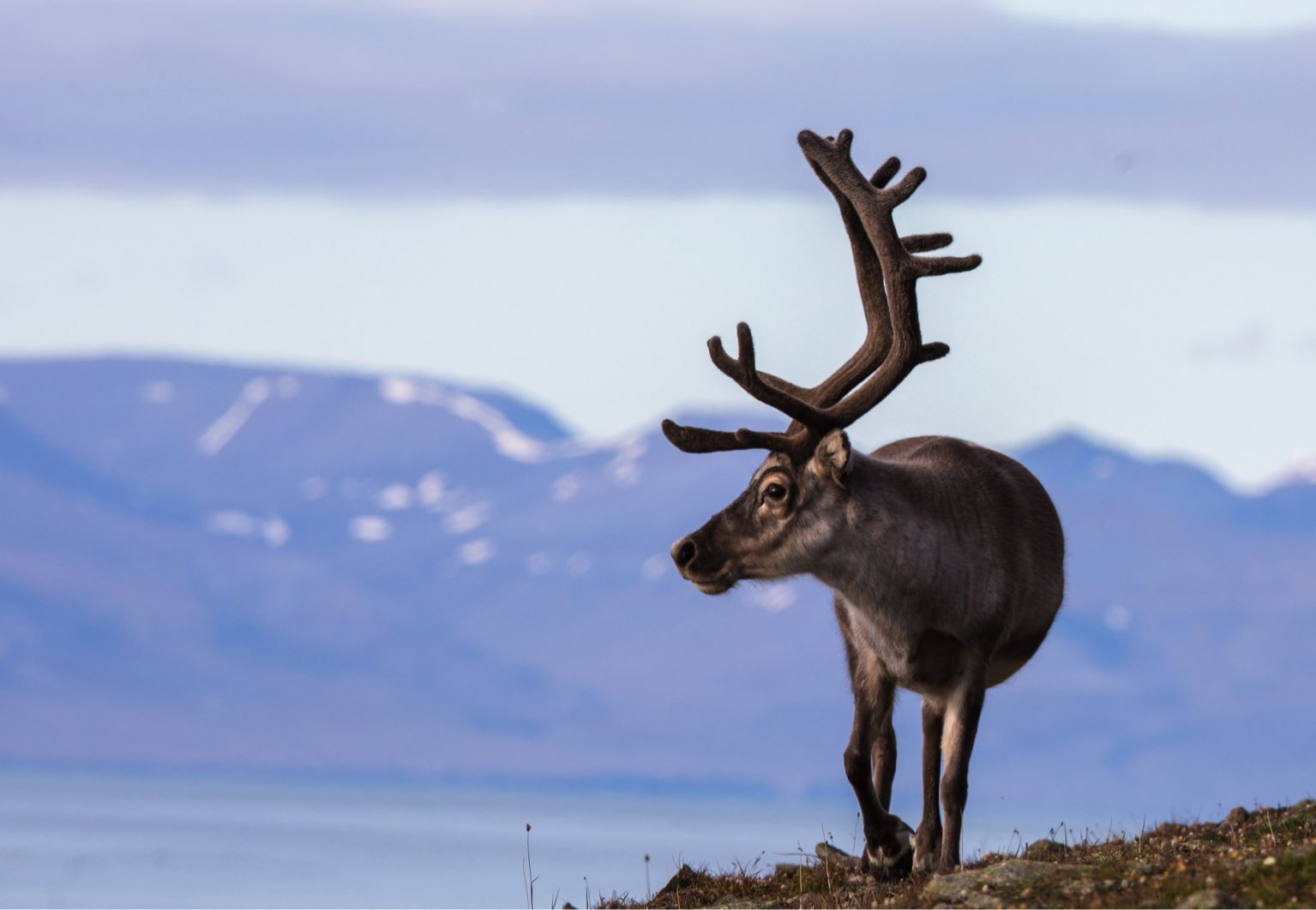Explore the World of Caribou
Learn about their habitat, behavior, and unique traits.
About the Animal
Caribou are medium to large-sized deer with stocky bodies, long legs, and thick fur that insulates them against extreme cold. Their fur color can range from light gray to brown depending on the season and subspecies. One of the most distinctive traits of caribou is that both males and females grow antlers, which is rare among deer species. Males’ antlers are usually larger and more elaborate, while females keep theirs through the winter, which helps them compete for food in snowy conditions. Caribou also have large, rounded hooves that spread out to act like snowshoes and help them travel across snow and soft ground. These hooves are also useful for digging through snow to find food, a behavior known as “cratering.”
Caribou are social animals that travel in herds, which can range from just a few individuals to several thousand during migration. These herds provide protection from predators such as wolves, bears, and eagles. Caribou have keen senses of smell and hearing, which help them detect danger and communicate with each other. They are strong swimmers and will cross rivers and lakes during migration, sometimes swimming for miles. Seasonal behaviors include rutting in the fall, when males compete for females using displays and antler sparring, and calving in the spring, when females give birth to one or occasionally two calves after a gestation period of about 230 days. Calves are born able to walk within hours and quickly join the herd.
Habitat
Caribou, known as reindeer in Europe and Asia, are large herbivorous mammals that belong to the deer family (Cervidae). Their scientific name is Rangifer tarandus. While “reindeer” is commonly used in Eurasia and when referring to domesticated populations, “caribou” usually describes wild populations in North America. Caribou are native to Arctic, subarctic, boreal, and mountainous regions across North America, Europe, and Asia. They are well-adapted to cold climates and are known for their long migrations, which are among the longest of any land mammal. Depending on the region and subspecies, their lifespans in the wild typically range from 10 to 15 years.
Caribou inhabit a range of environments depending on the time of year. Wild caribou live in tundra, boreal forests, and mountainous regions, often migrating vast distances—up to 3,000 miles a year—between summer and winter ranges. These migrations are triggered by changes in food availability, insect activity, and weather. In the summer, caribou move to higher elevations or open tundra to escape mosquitoes and flies. In winter, they move to forested areas where snow is shallower and lichens are more accessible. Domesticated reindeer, found mainly in northern Eurasia, are raised by Indigenous peoples such as the Sámi for transportation, milk, meat, and hides. These reindeer are usually more sedentary and live under human care but still retain many natural instincts.
Diet
Caribou are herbivores and their diet changes with the seasons. In the summer, they graze on grasses, leaves, and flowering plants, while in the winter they rely heavily on lichen, a type of slow-growing plant that they dig from beneath the snow. They also eat moss, sedges, shrubs, and fungi when available. Caribou need to consume large amounts of food daily to maintain their energy during migration and to survive the harsh winters. Their highly specialized digestive system allows them to break down tough, fibrous plant material that many animals cannot digest.
Gallery

